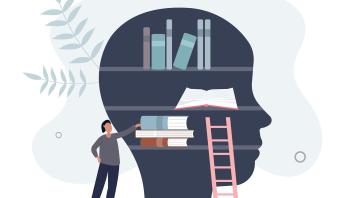Chance favors the connected mind. So says Steven Johnson, best-selling author of books on the intersection of science, technology and personal experience. Johnson has spent lots of time answering questions such as: what types of spaces lead to creativity and innovation? He describes how many great ideas don’t come from a big eureka! Most come from ideas that have percolated or marinated within for quite some time. Johnson believes that good ideas come from the collision of smaller ideas, and only after those smaller ideas have time to incubate. Embedded within his theory about where good ideas come from is the notion that these smaller ideas may exist within other people, and it’s only when the smaller ideas have the chance to come together, can they become something bigger than the sum of their parts. Ideas need a space where ideas can mingle, and swap and create new forms.
What does this mean for the classroom? It’s a bit of a tough one because in most schools teachers only get to have our students for one year; this doesn’t allow much time for incubation and percolation. But I think there are things teachers can do within one year to foster creativity and innovation, even with our youngest learners.
- Allow time to circle back to projects. Looking at something after a few days off does wonders for one’s perspective on it.
- Provide a physical meeting place and the time for kids to sit and talk about ideas. Writer’s conferences are the closest thing most classrooms have to this, but I think it’s a model for other subjects as well.
- Respect that ideas come in all shapes and sizes. What might seem wrong, or too crazy, or too complicated when first heard (or thought) just may turn out to be a piece of something larger. And better.
If you have four minutes, I encourage you to watch and listen as Steven Johnson talks and draws his way through Where Good Ideas Come From . And if you’re so inclined, check out Johnson’s book Where Good Ideas Come From: The Natural History of Innovation.
About the Author
Along with her background as a professor, researcher, writer, and teacher, Joanne Meier is a mom. Join Joanne as she shares her experiences raising her own young readers, and guides parents and teachers on the best practices in reading.

